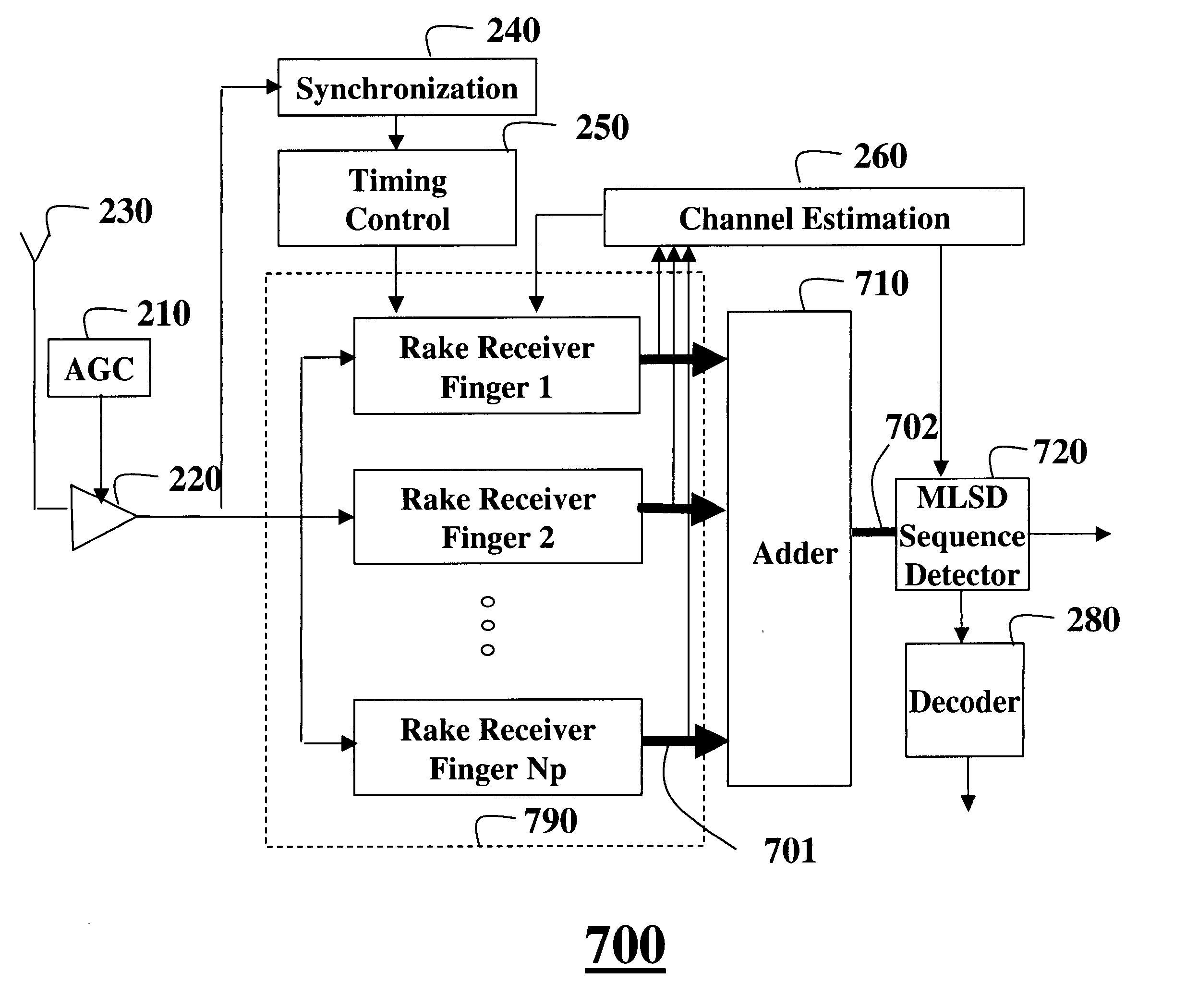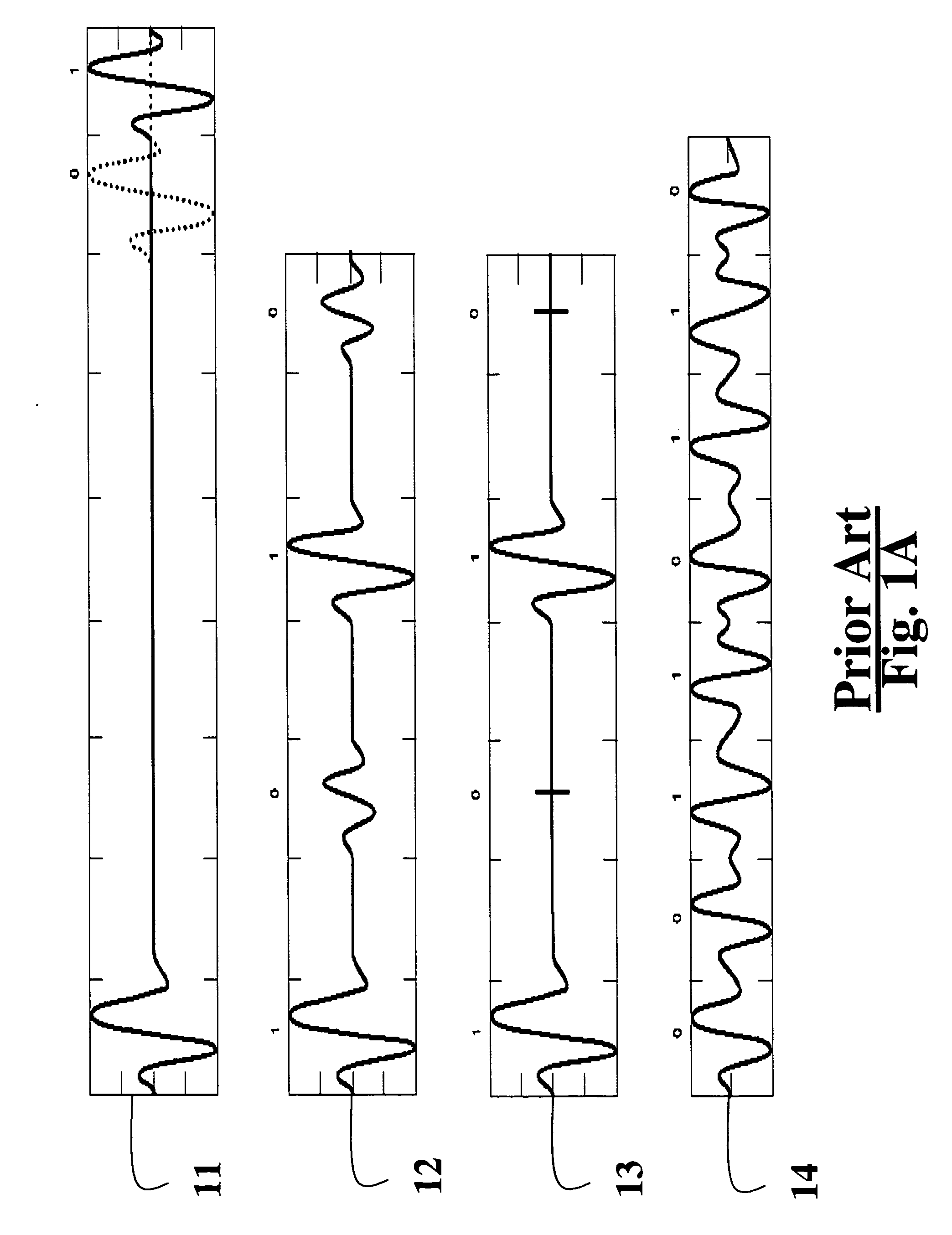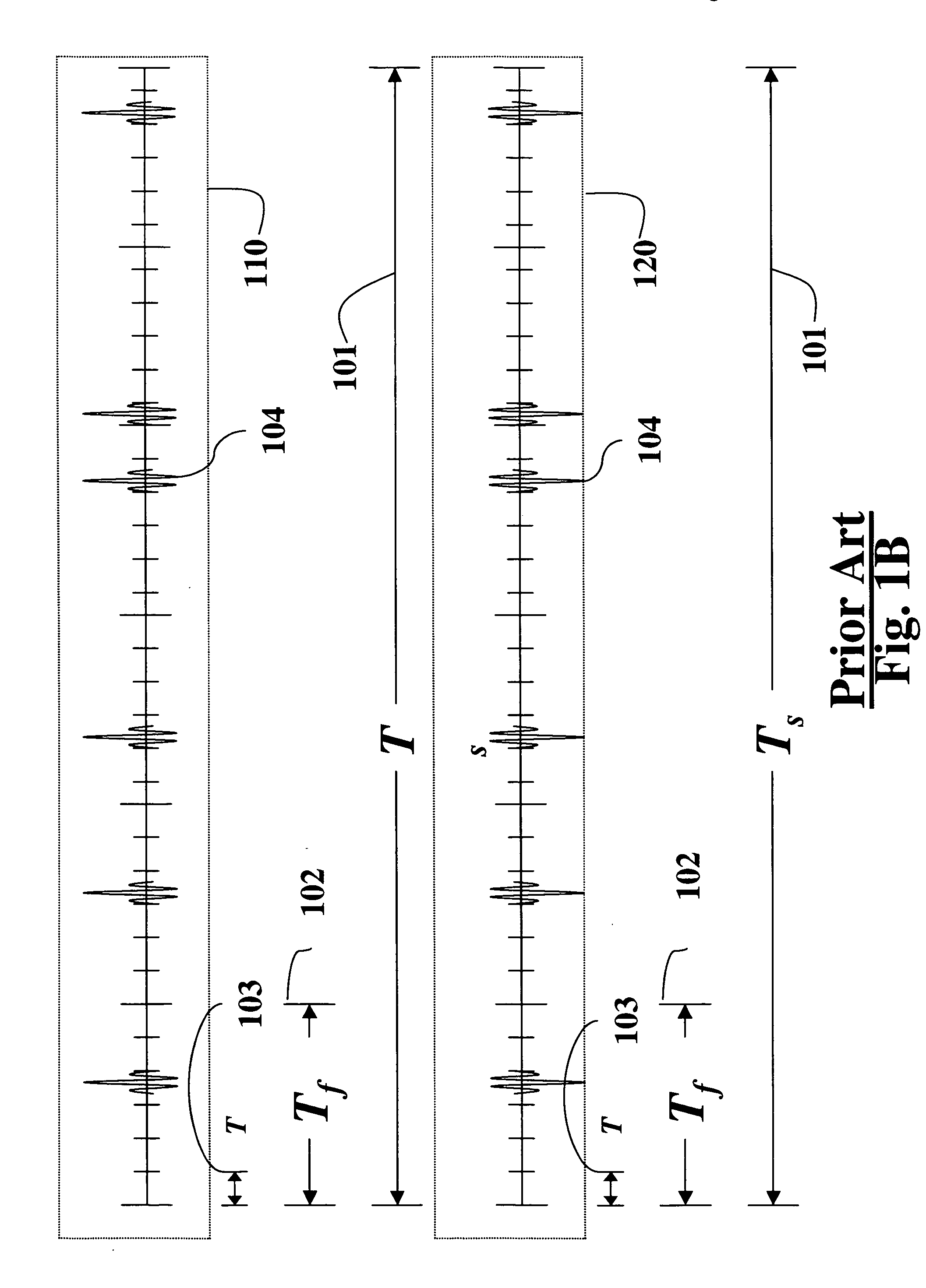Modulating signals for coherent and differentially coherent receivers
- Summary
- Abstract
- Description
- Claims
- Application Information
AI Technical Summary
Benefits of technology
Problems solved by technology
Method used
Image
Examples
Embodiment Construction
[0033] Our invention provides a system and method that enables both TH-IR and TR-IR transceivers to co-exist in the same wireless network. Our idea is based on our observation that TR-IR systems encode an information bit as a phase difference between a reference pulse and a data pulse. Furthermore, the polarity of the reference pulse is inconsequential for the correct operation of the TR-IR system.
[0034] Therefore, we encode redundant information in the reference pulses so that a TH-IR receiver can decode the information with improved performance, while maintaining the required phase difference or polarity so that a TR-IR can also decode the information. We call this modulation ‘hybrid-IR’ (H-IR).
[0035]FIG. 5 show a H-IR transmitter 500 according to the invention. The transmitter includes a pre-processor 510 for input bits 501. The pre-processor includes a delay 502 and an adder 503. The adder sums each input bit 501 to a delayed version of the bit, the sum is inverted 504.
[0036]...
PUM
 Login to view more
Login to view more Abstract
Description
Claims
Application Information
 Login to view more
Login to view more - R&D Engineer
- R&D Manager
- IP Professional
- Industry Leading Data Capabilities
- Powerful AI technology
- Patent DNA Extraction
Browse by: Latest US Patents, China's latest patents, Technical Efficacy Thesaurus, Application Domain, Technology Topic.
© 2024 PatSnap. All rights reserved.Legal|Privacy policy|Modern Slavery Act Transparency Statement|Sitemap



